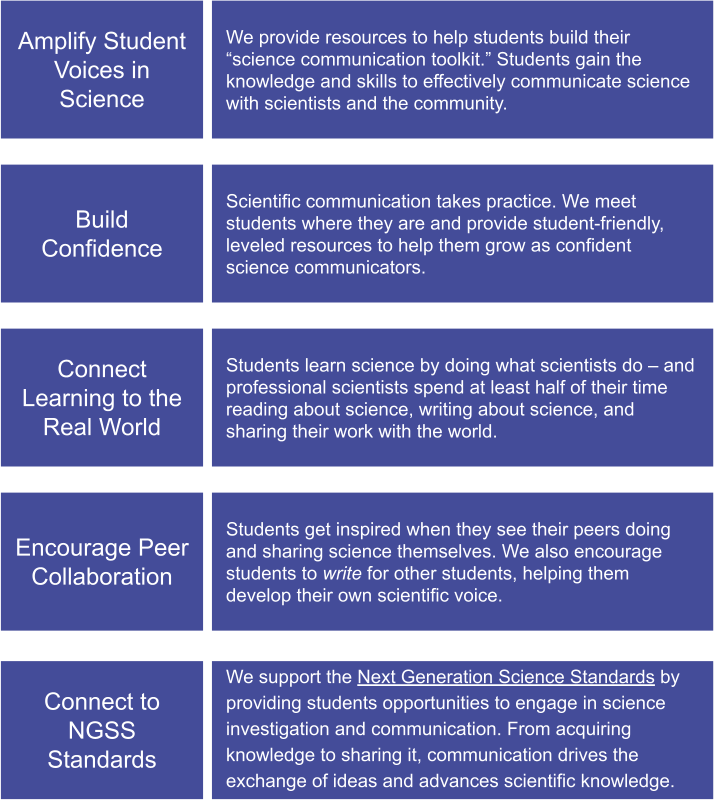At Emerging Investigators, we believe students develop their scientific voice by doing what scientists do: engaging with new ideas, honing their critical thinking skills, and sharing science with the world. We also know that science and education are community endeavors – and that teachers provide the power and guidance for students to practice authentic science.
From NGSS-aligned lesson plans to student-friendly submission guides, JEI and eiRxiv’s team of expert science educators are committed to supporting teachers and students exploring authentic science experiences.
By incorporating JEI and eiRxiv into your classroom, you can:

We encourage you to explore our classroom resources below to learn how to enhance your students’ scientific reading, research, writing, thinking, and collaboration.
What's a Preprint?
Keywords: Peer review, preprint, scientific journal article, scientific method
Suggested Grade Level: High School
In this lesson, students will learn about preprint articles (“preprints”) and the information these articles typically contain. While there are different types of preprints, this lesson focuses on those that report findings from a scientific study.
Reading A Student-Published Journal Article
Keywords: Scientific journal article, scientific method
Suggested Grade Level: Middle and high school
In this lesson, students will learn strategies for reading primary scientific literature using a journal article written by a middle or high school student for the Journal of Emerging Investigators (JEI). JEI publishes student research with the support of mentors (e.g., teachers or parents), and each article receives peer review by graduate-level scientists who are working on or have their Master’s or PhD. By reading JEI articles, students gain exposure to primary scientific literature and the structure of scientific writing. They may even be inspired to publish their own research from science fairs, extracurricular activities (e.g., science camps), or home experiments!
Beyond "Good Job!" - Practicing Scientific Feedback
Keywords: Constructive feedback, peer review
Suggested Grade Level: High School
In this lesson, students will identify qualities of constructive scientific feedback. Then, they will practice giving structured feedback on a classmate’s science-related work using the qualities they identified earlier. This lesson works as a one-time, standalone activity or as an introductory lesson to prepare students to provide ongoing and systematic peer review throughout a unit, semester, or school year. This lesson can be supplemented with our Peer Review Worksheets (below), or you can create your own.
Peer Review Worksheets
Keywords: Constructive feedback, peer review, scientific method, science communication
Suggested Grade Level: High School
Our Peer Review Worksheets help students organize their feedback on classmates’ science-related work – such as lab reports, presentations (e.g., posters or videos), research papers, and science fair projects. The worksheets can be used on their own or to support our constructive feedback lesson, "Beyond Good Job."
If you have questions or feedback on our education materials, please reach out to us at [email protected].
